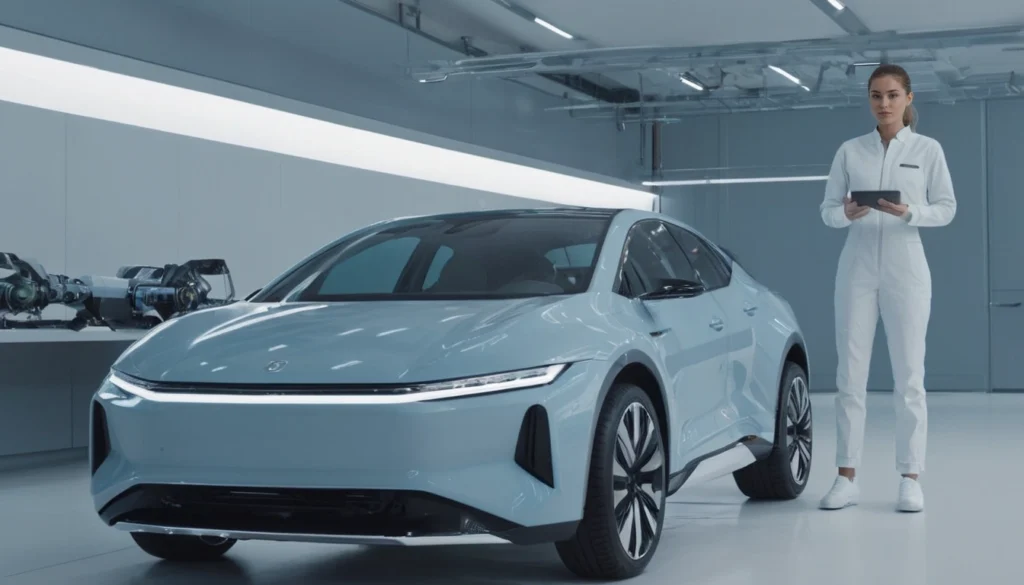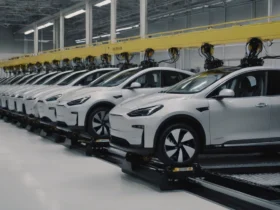Analyzing the Unexpected Downturn in Tesla’s Quarterly Deliveries and Its Implications on the Future of Electric Vehicles

In the constantly evolving landscape of the automotive industry, the first quarter of 2024 has brought with it a stark reminder of the volatility and challenges that lie within. As we delve into the dynamics that have led to Tesla’s first year-over-year drop in quarterly deliveries since the onset of the pandemic, it’s essential to unpack the factors contributing to this downturn and explore the broader implications for the electric vehicle (EV) sector.
A Closer Look at Tesla’s Performance
The recent announcement from Tesla, the pioneering electric vehicle manufacturer spearheaded by Elon Musk, revealed a surprising 8.5% decrease in global car deliveries, falling from 423,000 in the previous year to 387,000 in the first quarter of 2024. This decline not only affected Tesla’s stock, which saw a nearly 5% drop in a single trading day, but also positioned the company as one of the S&P 500’s most underperforming entities this year, marking a significant shift from its previously unassailable growth trajectory.
Underlying Challenges
Several key factors have been identified as contributors to Tesla’s slowed momentum. Firstly, the company had previously signaled a tempered growth outlook for 2024, attributing this to the increased interest rates that have subsequently made vehicle ownership less accessible to a broad consumer base. Additionally, Tesla faced operational disruptions, most notably an arson attack at its Berlin gigafactory and shipping challenges in the Red Sea, further complicating its production and delivery chain.
Despite these obstacles, Tesla’s delivery figures, albeit lower than expected, still managed to exceed Wall Street predictions, underscoring a complex interplay of market expectations and reality. This dynamic prompts a deeper investigation into the EV market’s current state and its future direction.
The Broader EV Landscape

Tesla’s downturn is not occurring in isolation. The broader EV market is experiencing a shift that some analysts are terming an “EV winter,” moving from a period of heightened enthusiasm to one of cautious realism. This transition is evidenced by the mixed signals within the sector: while Tesla faced a decline, Chinese automaker BYD reported a 13% increase in EV sales, albeit with a quarter-on-quarter dip. Similarly, Toyota witnessed a significant 74% rise in sales of electrified vehicles in the U.S., highlighting a growing consumer inclination towards hybrid models over purely electric ones.
These trends reflect a diverse set of challenges and opportunities within the EV market. Concerns over costs, charging infrastructure, and vehicle range are increasingly influencing consumer decisions, potentially steering them towards hybrid vehicles that promise the best of both worlds.
Strategic Advertising Shifts
An interesting facet of Tesla’s strategy in navigating these challenges is its approach to advertising. In a marked departure from Elon Musk’s historically disdainful stance on advertising, Tesla significantly ramped up its U.S. digital advertising efforts in 2023, investing approximately $6.4 million, a dramatic increase from the previous year’s $175,000. This pivot underscores the importance of effective communication and brand positioning in maintaining market competitiveness, especially in times of uncertainty.
Navigating Forward
As Tesla prepares to release its first-quarter earnings, the industry awaits with bated breath to gauge the full extent of these challenges and the company’s strategies for overcoming them. In this context, the role of innovative, AI-driven solutions in enhancing operational efficiency and consumer engagement cannot be overstated. For instance, platforms like PaperOffice, renowned for their AI-based document management capabilities, exemplify the type of technology that can streamline processes and improve decision-making in complex scenarios.

The Road Ahead
The recent developments within Tesla and the broader EV market are emblematic of the growing pains associated with rapid innovation and market expansion. As the industry grapples with these challenges, the focus shifts towards resilience, adaptability, and the strategic integration of technology to navigate the road ahead. In doing so, companies can not only weather the current “EV winter” but also emerge stronger, ready to drive the next wave of growth in the sustainable mobility landscape.
In conclusion, Tesla’s recent setback serves as a pivotal moment for reflection and recalibration. By understanding the intricate factors at play and leveraging advanced technological solutions, the automotive industry can pave the way for a more sustainable, efficient, and consumer-friendly future. As we continue to monitor Tesla’s journey and the evolving dynamics of the EV market, one thing remains clear: innovation, adaptability, and strategic foresight will be key to navigating the road ahead.






Leave a Review